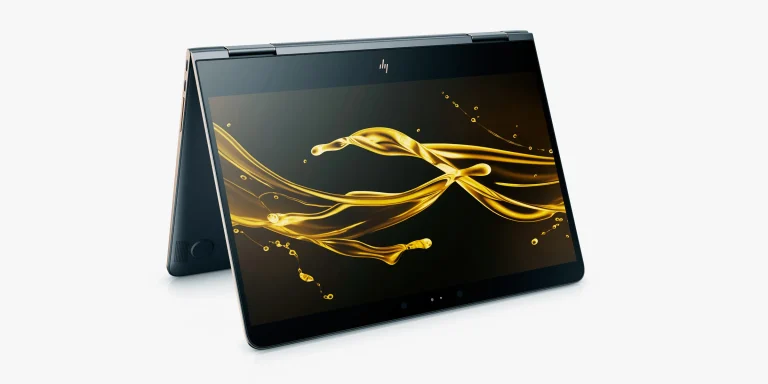HP Spectre x360 vs Dell XPS 13 – Best Ultrabook for Professionals (2025)
The year 2025 has redefined what it means to own a premium ultrabook. Both the HP Spectre x360 and Dell XPS 13 stand at the top of the category, offering sleek designs, powerful performance, and all-day battery life. Professionals around the world rely on these machines for work, creativity, and travel. But which one truly stands out as the best ultrabook for 2025? This detailed comparison examines every aspect — from design and display to performance, battery life, and overall usability — to help you make the right choice.
Design and Build Quality
The HP Spectre x360 continues to impress with its refined craftsmanship. Its sharp edges, gem-cut design, and durable aluminum chassis make it look and feel luxurious. More importantly, it’s a 2-in-1 convertible laptop, allowing users to switch between laptop, tablet, and tent modes with ease. The flexibility is ideal for professionals who present frequently or take handwritten notes using a stylus. HP’s signature Nightfall Black and Poseidon Blue finishes make the device stand out in any workspace.
Meanwhile, the Dell XPS 13 takes a minimalist approach. It’s one of the lightest and most compact laptops in its class, weighing around 1.2 kilograms. The carbon fiber keyboard deck and machined aluminum shell give it a premium yet understated look. Dell’s InfinityEdge display with razor-thin bezels maximizes screen space without increasing size. While it lacks a convertible hinge, its sturdiness and portability make it perfect for professionals who prioritize elegance and travel convenience.
Verdict: The Spectre x360 offers versatility and style for users who value flexibility. The XPS 13, on the other hand, wins for its compact form and precision engineering.
Performance and Power
Under the hood, both laptops are equipped with Intel’s latest Core Ultra processors for 2025, delivering exceptional performance and energy efficiency. The HP Spectre x360 offers configurations with up to 32GB of RAM and a 2TB SSD, providing ample power for multitasking, creative editing, and professional workloads. Its Intel Arc integrated graphics allow smooth rendering for light video editing and graphic design work.
The Dell XPS 13 matches that performance with its own Intel Core Ultra series and up to 32GB LPDDR5 memory. Its efficient thermal system allows sustained performance without overheating, even during long work sessions. While the XPS 13 isn’t built for intensive 3D workloads, it handles productivity, programming, and multimedia tasks effortlessly.
For most professionals, both laptops deliver more than enough performance. However, the HP Spectre’s slightly larger cooling capacity and convertible versatility give it an advantage for multitasking and creative flexibility.
Display and Visual Experience
Display quality is where both laptops excel. The HP Spectre x360 features a 14-inch OLED touchscreen with 3K resolution, vibrant colors, and deep blacks. Its touchscreen supports stylus input, making it an excellent choice for designers, architects, and digital artists. The screen’s brightness and anti-reflective coating ensure comfortable use even in brightly lit environments.
The Dell XPS 13, on the other hand, features a stunning 13.4-inch 3K OLED display with ultra-thin bezels and exceptional clarity. The screen offers 100% DCI-P3 color accuracy, ensuring lifelike visuals for photographers and editors. However, it lacks touch and pen support in some configurations. The XPS 13’s display also benefits from higher power efficiency, which helps extend battery life.
Verdict: The HP Spectre x360 wins for its touch-enabled OLED versatility, while the XPS 13 takes the crown for immersive visuals and professional color accuracy.
Port Selection and Connectivity
In an age of wireless devices, ports still matter for professionals. The HP Spectre x360 offers a well-rounded selection, including two Thunderbolt 4 ports, a USB-A port, a microSD card reader, and a headphone jack. This versatility allows quick connections to external monitors, cameras, and drives without relying heavily on adapters.
The Dell XPS 13 embraces minimalism, offering only two Thunderbolt 4 ports and a headphone jack. While sleek, this design requires dongles or docking stations for added connectivity, especially for users who work with multiple peripherals.
Verdict: The HP Spectre x360 offers better connectivity out of the box, while the Dell XPS 13 is ideal for users who prefer minimalism and wireless workflows.
Battery Life and Charging
Battery performance is crucial for mobile professionals, and both devices excel in efficiency. The HP Spectre x360 provides up to 15 hours of mixed-use battery life, depending on brightness and workload. Fast charging delivers 50% power in just 30 minutes, making it ideal for people on the go.
The Dell XPS 13 offers even more endurance, with battery life reaching up to 18 hours under typical office workloads. Its smaller, power-efficient display contributes to the extended runtime. Like HP, Dell supports fast charging, ensuring your laptop can quickly recover power during travel or meetings.
Verdict: The XPS 13 leads in battery endurance, while the Spectre x360 provides more flexibility for convertible use and stylus integration.
Keyboard, Trackpad, and Audio
The typing experience on both laptops feels premium. The HP Spectre x360 provides a comfortable, backlit keyboard with deep key travel and responsive feedback. Its trackpad is large, smooth, and precise, supporting Windows gestures flawlessly. The Bang & Olufsen-tuned speakers deliver clear, balanced audio suitable for calls and entertainment.
The Dell XPS 13 features a slightly firmer keyboard with shorter key travel, optimized for fast typing. Its haptic trackpad provides satisfying feedback, giving it a modern edge over traditional mechanical clickpads. The upward-firing speakers deliver rich audio, making video calls and presentations clear and immersive.
Verdict: The Spectre x360 offers a traditional but comfortable typing experience, while the XPS 13’s haptic technology feels futuristic and refined.
Price and Value for Money
The HP Spectre x360 starts at a slightly higher base price due to its OLED display and convertible design. It provides tremendous value for professionals who need both performance and flexibility in one machine. The inclusion of a stylus and touchscreen adds to its long-term versatility.
The Dell XPS 13 is priced competitively for its class and offers excellent value for professionals who want a premium, lightweight laptop with exceptional battery life and display quality. Its minimalist design appeals to users who prefer simplicity and performance over additional features.
Verdict: The HP Spectre x360 delivers better overall versatility and creative potential, while the Dell XPS 13 offers stronger value for professionals focused on portability and battery longevity.
Final Verdict
In the battle of the 2025 ultrabooks, both the HP Spectre x360 and Dell XPS 13 shine in their own right. The Spectre x360 is ideal for creators and multitaskers who need flexibility, stylus support, and touch interaction. It’s a perfect hybrid for professionals who want both power and adaptability. The Dell XPS 13, on the other hand, is the ultimate choice for frequent travelers and executives who demand premium build quality, long battery life, and minimalistic design.
If you want a versatile, touchscreen powerhouse, choose the HP Spectre x360. If you prefer a lightweight productivity machine with outstanding endurance, go for the Dell XPS 13. Either way, you’ll own one of the most refined and professional laptops of 2025.



















